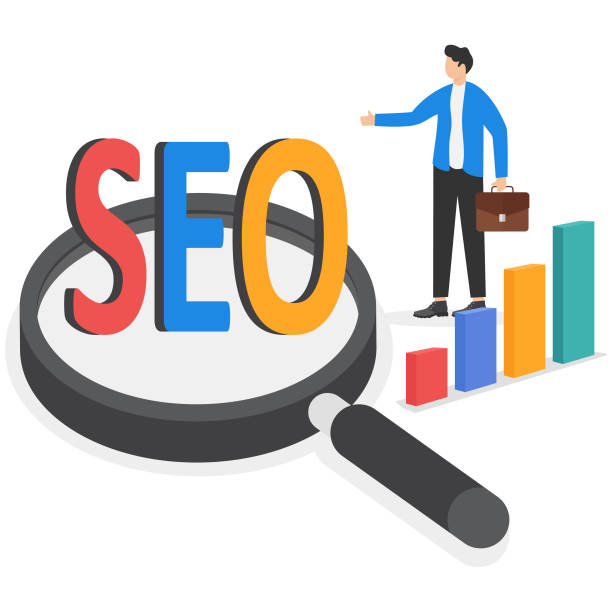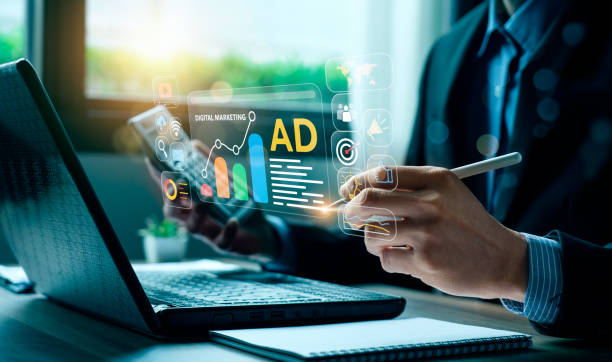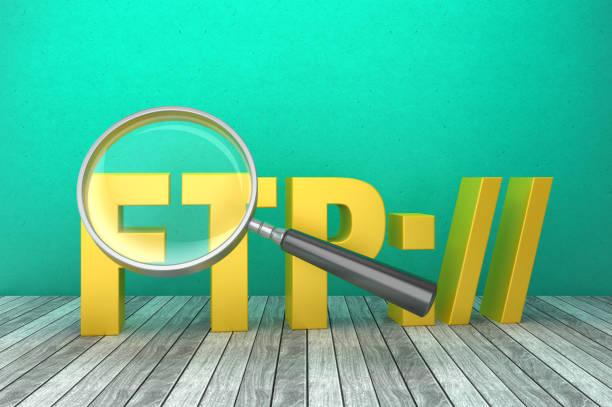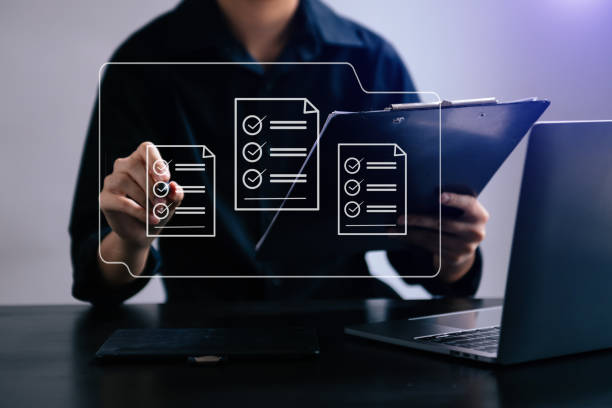Introduction to On-Page SEO and its Importance
![]()
In today’s highly competitive web world, online presence is not just about having a website; its visibility is of paramount importance.
This is where #On-Page SEO plays its pivotal role.
On-page SEO refers to the set of actions we take within the website itself to optimize it for search engines and users.
These actions include content optimization, URL structure, title tags, meta descriptions, and image optimization.
The main goal of On-page SEO is for search engines to easily understand the topic and quality of your content, and consequently, display it in higher rankings.
Without a strong strategy in search engine optimization, even the best content may never reach its audience.
Proper optimization of web pages signals to search engines that your page is relevant and authoritative for specific keywords.
In fact, On-page SEO is the foundation for the success of any SEO strategy, and without it, off-page SEO efforts will have less impact.
This topic is very educational and essential for any webmaster who wants to increase their website’s organic traffic.
A deep understanding of these principles and their correct implementation will make a significant difference in your site’s performance.
Is your online sales not as expected? With Rasawave, solve low sales and poor user experience problems forever!
✅ Increase visitor to customer conversion rate
✅ Create an enjoyable user experience and increase customer trust
⚡ Act now for a free consultation!
Targeted Keyword Research for On-Page SEO

One of the first and most crucial steps in the path of On-page SEO is conducting comprehensive and targeted #keyword research.
Choosing the right keywords is like finding a compass that determines the direction of your content.
This research goes beyond merely finding words people search for; it delves into a deeper understanding of user search intent and their needs.
For example, if a user is searching for “how to cook Ghormeh Sabzi”, their goal is to get a step-by-step recipe, not the history of the dish.
Various tools such as Google Keyword Planner, Ahrefs, Semrush, and KWFinder can assist you in this process.
You should look for keywords that have a good search volume and whose competitiveness is within an acceptable range.
Also, paying attention to Long-Tail Keywords, which attract more targeted traffic to your site, is of high importance.
For instance, “On-page SEO tutorial for beginners” is a longer and more targeted keyword than just “SEO.”
This specialized approach allows you to produce content that exactly matches your audience’s needs and increases your chances of ranking in search results.
Successful On-page SEO depends on the correct selection of keywords.
Optimizing Title Tags and Meta Descriptions for Better CTR

Title Tag and Meta Description are the first impressions users and search engines have of your page, playing a vital role in #On-page SEO.
The title tag is the title displayed in the browser tab and also as the main heading in Google search results.
This tag should include the page’s main keyword and be appealing enough to encourage users to click.
The optimal length for a title tag is usually between 50 and 60 characters to be fully displayed in search results.
The meta description is also a short, attractive summary of the page’s content that appears below the title in search results.
Although meta descriptions do not directly affect rankings, they play a significant role in increasing the click-through rate (CTR).
A good meta description should be persuasive, include relevant keywords, and be between 150 and 160 characters.
This section is an excellent opportunity for a brief and useful explanation about your page.
To optimize these two important On-page SEO elements, it is recommended to place the main keyword at the beginning of the title and in important parts of the meta description.
Also, using a Call to Action in the meta description can significantly increase the click-through rate.
This part of On-page SEO requires creativity and precision to attract users away from competitors.
| Element | Role in SEO | Optimal Length (Approx.) | Key Points |
|---|---|---|---|
| Title Tag | Directly impacts ranking, displayed in search results | 50-60 characters | Includes main keyword, attractive and persuasive |
| Meta Description | Indirect impact on ranking (increases CTR) | 150-160 characters | Includes keyword, attractive summary, includes Call to Action |
Content Optimization Strategies for On-Page SEO

Content is the king of #SEO, and in the realm of #On-page SEO, its quality and optimization are of paramount importance.
Producing valuable content relevant to keywords is considered one of the main pillars of success in On-page SEO.
To begin, your content should be comprehensive and in-depth, addressing all aspects of the topic so that the user doesn’t need to search elsewhere.
Using long-form content, which is at least 1000 to 2000 words or more, usually performs better in search results because it allows for broader topic coverage and the inclusion of more relevant keywords.
Your content should be readable and well-structured.
Using appropriate headings (H1, H2, H3…), short paragraphs, bullet points, and lists significantly improves text readability.
This structure is not only beneficial for users but also helps search engines understand the structure and importance of different parts of your content.
Intelligent inclusion of main keywords and their synonyms throughout the text, without overdoing it (Keyword Stuffing), is crucial.
This helps search engines understand the relevance of your content to target keywords.
Also, using analytical and entertaining content can increase user engagement, which is a positive signal for SEO.
Your content can include statistics, infographics, videos, and quotes to enhance its visual and informational appeal.
The ultimate goal of On-page SEO in this section is to provide content that is not only optimized for search engines but also offers an excellent user experience.
Is your online sales not as expected? With Rasawave, solve low sales and poor user experience problems forever!
✅ Increase visitor to customer conversion rate
✅ Create an enjoyable user experience and increase customer trust
⚡ Act now for a free consultation!
The Importance of Internal Linking and Site Structure Improvement
![]()
Internal linking, which means creating links from one web page on your site to another page on the same site, is a powerful #On-page SEO element often overlooked.
This strategy not only helps search engines better understand your site’s structure and find your pages more easily but also distributes ranking power (Link Equity) throughout your site.
By linking from higher authority pages to target pages with relevant keywords, you can help improve those pages’ rankings.
This is a key guide for any webmaster.
Using descriptive Anchor Texts relevant to the destination page’s content is of high importance.
Instead of using generic phrases like “click here”, use phrases that include keywords relevant to the destination page.
This helps search engines better understand the topic of the linked page.
Furthermore, site structure plays a significant role in On-page SEO.
A logical and hierarchical structure, where main pages are at the top and more detailed pages are in lower layers, helps search engine crawlers crawl your site more effectively.
Using Breadcrumbs not only helps users navigate the site but also strengthens the internal linking structure.
Overall, strong On-page SEO requires careful planning for internal linking and creating a coherent and accessible site structure so that search engines can easily discover and rank all your valuable content.
Image Optimization and Its Impact on Speed and SEO

Images are an integral part of any website, contributing to visual appeal and better content understanding.
However, if not properly optimized, they can become a major obstacle to #On-page SEO and site loading speed.
#Image optimization involves several key steps that are vital for any On-page SEO strategy.
The first step is image compression.
Large-sized images can severely reduce page loading speed, which is an important ranking factor for Google.
Using tools like TinyPNG or ShortPixel can reduce image file size without significant quality loss.
The next step is using appropriate image formats.
Formats like WebP are quickly gaining popularity due to better compression.
Then comes file naming and alternative text (Alt Text).
The image file name should be descriptive and include keywords (e.g., use keyword-image.jpg instead of img123.jpg).
Alt text is also a brief and accurate description of the image content, displayed to users if the image fails to load, and is very important for search engines and people with visual impairments.
Alt text should include relevant keywords but not be spammed.
This specialized and guideline-oriented approach not only helps improve On-page SEO but also enhances user experience, resulting in reduced bounce rate and increased user dwell time on the site.
These small actions will have a big impact on your site’s overall performance.
Optimal URL Structure and Schema Markup Usage

URL structure (internet address) and the use of Schema Markup are two important and often overlooked factors in #On-page SEO that can significantly help improve your website’s comprehensibility for search engines.
An optimal #URL should be short, descriptive, readable, and include the page’s main keywords.
Avoid using complex characters, meaningless numbers, and dynamic parameters that are long and incomprehensible.
For example, instead of “yoursite.com/cat=123∏=456”, use “yoursite.com/laptop/gaming-laptop-model-x”.
This structure is not only more understandable for users but also helps search engines understand the page’s content and is considered a positive point for On-page SEO.
Regarding Schema Markup, it’s a type of semantic coding that helps search engines better understand your page’s content.
By using schema, you can provide specific information such as user reviews, product prices, event information, frequently asked questions (FAQ), etc., in a structured way to search engines.
This information is displayed in search results as Rich Snippets, which can significantly increase your click-through rate (CTR).
For example, displaying rating stars next to the page title in search results can attract user attention and encourage them to click.
Implementing Schema Markup is a specialized and analytical part of On-page SEO that can differentiate your site from competitors and bring you a special position in search results.
| Element | Importance in On-page SEO | Optimization Tips |
|---|---|---|
| URL Structure | Aids readability and search engine understanding | Short, descriptive, includes keywords, use hyphens (-) |
| Schema Markup | Increases semantic understanding of content, displays Rich Snippets | Use for products, reviews, FAQ, events, jobs, and … |
Core Web Vitals and User Experience in On-Page SEO

Core Web Vitals are Google’s vital metrics for evaluating a web page’s #user experience, and in recent years, they have become important factors in #On-page SEO.
These metrics include three main indicators: LCP (Largest Contentful Paint), which measures the loading time of the largest content element on the page; FID (First Input Delay), which refers to the page’s responsiveness to the user’s first interaction; and CLS (Cumulative Layout Shift), which measures the visual stability of the page.
Improving these indicators not only leads to better Google rankings but also significantly enhances the user experience.
Google consistently emphasizes the importance of user experience, and any optimization that helps improve it is valuable from an On-page SEO perspective.
Page loading speed, Mobile-Friendliness, and site security (using HTTPS) are also among the factors that directly impact user experience.
To improve Core Web Vitals, you should focus on code optimization, image compression, using CDNs, and reducing unnecessary JavaScript and CSS.
This topic is considered important news in the SEO world, conveying the message to webmasters that high-quality content alone is no longer sufficient; how it’s presented and the user’s experience with that content have also become increasingly important.
On-page SEO today goes beyond keyword placement; this field requires a comprehensive and user-centric approach.
Optimizing for Core Web Vitals requires an analytical and specialized approach that ultimately leads to greater user satisfaction and better search engine rankings.
Do you know that the first impression customers have of your company is your website? With a powerful corporate website from Rasaweb, multiply your business’s credibility!
✅ Custom and eye-catching design tailored to your brand
✅ Improved user experience and increased customer attraction
⚡ Get a free consultation now!
Common Mistakes in On-Page SEO and Ways to Avoid Them

On the path to #On-page SEO optimization, common mistakes can render your efforts fruitless and even harm your site’s ranking.
Identifying and avoiding these errors is crucial for success in On-page SEO.
One of the most common mistakes is “Keyword Stuffing”, or the unnatural density of keywords.
Some people mistakenly believe that by excessively repeating keywords, they will achieve a better ranking, whereas this practice is detected by Google’s algorithms and can lead to site penalties.
Instead, focus on producing natural and valuable content, and incorporate keywords naturally into the text.
Another mistake is ignoring Mobile-First Indexing.
Given the increasing use of mobile phones for searching, Google primarily considers your site’s mobile version for indexing and ranking.
Therefore, if your site is not optimized for mobile, you may face a drop in ranking.
Not using unique meta descriptions and title tags for each page is another common error that leads to pages competing with each other (Keyword Cannibalization).
Finally, not paying attention to site loading speed and not optimizing images are also big mistakes in On-page SEO.
These issues directly impact user experience and can increase the bounce rate.
By following a guideline-based approach and taking an inquisitive look at your performance, you can prevent these mistakes and create a strong and sustainable On-page SEO strategy that will help your site grow steadily.
Measuring Success and On-Page SEO Monitoring Tools

After implementing #On-page SEO strategies, the next step is measuring success and continuously monitoring site performance.
Without regular monitoring, you cannot evaluate the impact of the changes made and, if necessary, adjust your strategy.
Several tools are available for this purpose, each providing valuable information.
#Google Analytics and #Google Search Console are two essential and free tools from Google that every webmaster should use.
Google Analytics provides information about site traffic, user behavior, bounce rate, and dwell time on the site.
These statistics help you understand how users interact with your content and what are the strengths and weaknesses of your site in terms of user experience.
Google Search Console also provides vital information about your site’s performance in search results, including keywords you’ve ranked for, crawl errors, security issues, and page indexing status.
In addition, paid tools like Ahrefs, Semrush, and Moz offer more advanced features for competitor analysis, keyword research, and backlink monitoring.
Monitoring keyword rankings, click-through rate (CTR), organic traffic, and bounce rate are important Key Performance Indicators (KPIs) that should be regularly reviewed.
This analytical approach allows you to accurately evaluate your On-page SEO performance and make data-driven decisions.
On-page SEO is an ongoing process, and continuous monitoring helps you stay one step ahead and be aware of Google’s algorithm changes.
Frequently Asked Questions
| Question | Answer |
|---|---|
| What is On-Page SEO? | It refers to a set of actions taken within a website to improve its ranking in search engines. |
| Why is On-Page SEO important? | Because it helps search engines better understand your site’s content and structure, and improves user experience. |
| What are the most important elements of On-Page SEO? | Title and meta descriptions, keywords, URL structure, quality content, image optimization, internal linking, and site speed. |
| How to optimize Title Tags and Meta Descriptions? | The title should include the main keyword and be attractive, and the meta description should be a persuasive summary of the content with relevant keywords. |
| What is the role of keywords in On-Page SEO? | Keywords inform search engines about the page’s content and should be used naturally and intelligently within the text. |
| How is image optimization done for On-Page SEO? | By compressing size, using a descriptive file name, and filling the Alt tag with relevant descriptions and keywords. |
| What is Internal Linking and what is its use? | It is the connection of different pages on a site to each other. This helps distribute Page Authority and improve search engine crawling. |
| What is the importance of site loading speed in On-Page SEO? | High speed improves user experience and is an important ranking factor for search engines like Google. |
| What is the impact of site responsiveness (Mobile-Friendliness) on On-Page SEO? | Given the increase in mobile users, responsiveness is essential for providing a suitable user experience across all devices and for Google’s mobile-first indexing priority. |
| What are the important content-related factors in On-Page SEO? | Originality, quality, comprehensiveness, readability, proper use of headings (H1, H2,…) and regular content updates. |
And other services of RasaWeb Advertising Agency in the field of advertising
Smart Digital Advertising: Professional optimization for improved SEO ranking using intelligent data analysis.
Smart Data Analysis: An innovative service for increasing website traffic through the use of real data.
Smart Customer Journey Map: Designed for businesses looking to increase click-through rates through Google Ads management.
Smart Direct Marketing: A fast and efficient solution for user engagement with a focus on SEO-driven content strategy.
Smart Brand Identity: An effective tool for customer acquisition with the help of an SEO-driven content strategy.
And hundreds of other services in the field of internet advertising, advertising consultation, and organizational solutions
Internet Advertising | Advertising Strategy | Advertorials
Resources
What is On-Page SEO?On-Page SEO TutorialAll About On-Page SEOOn-Page SEO
? Are you ready for your business to leap forward in the digital world? RasaWeb Afarin Digital Marketing Agency, by offering services such as modern UI website design, professional SEO, and social media management, paves the way for your business’s growth and brilliance in the online space. For a free consultation and to learn more about our services, contact us now.
📍 Tehran, Mirdamad Street, next to Bank Markazi, Kazeroon Jonubi Alley, Ramin Alley, No. 6




